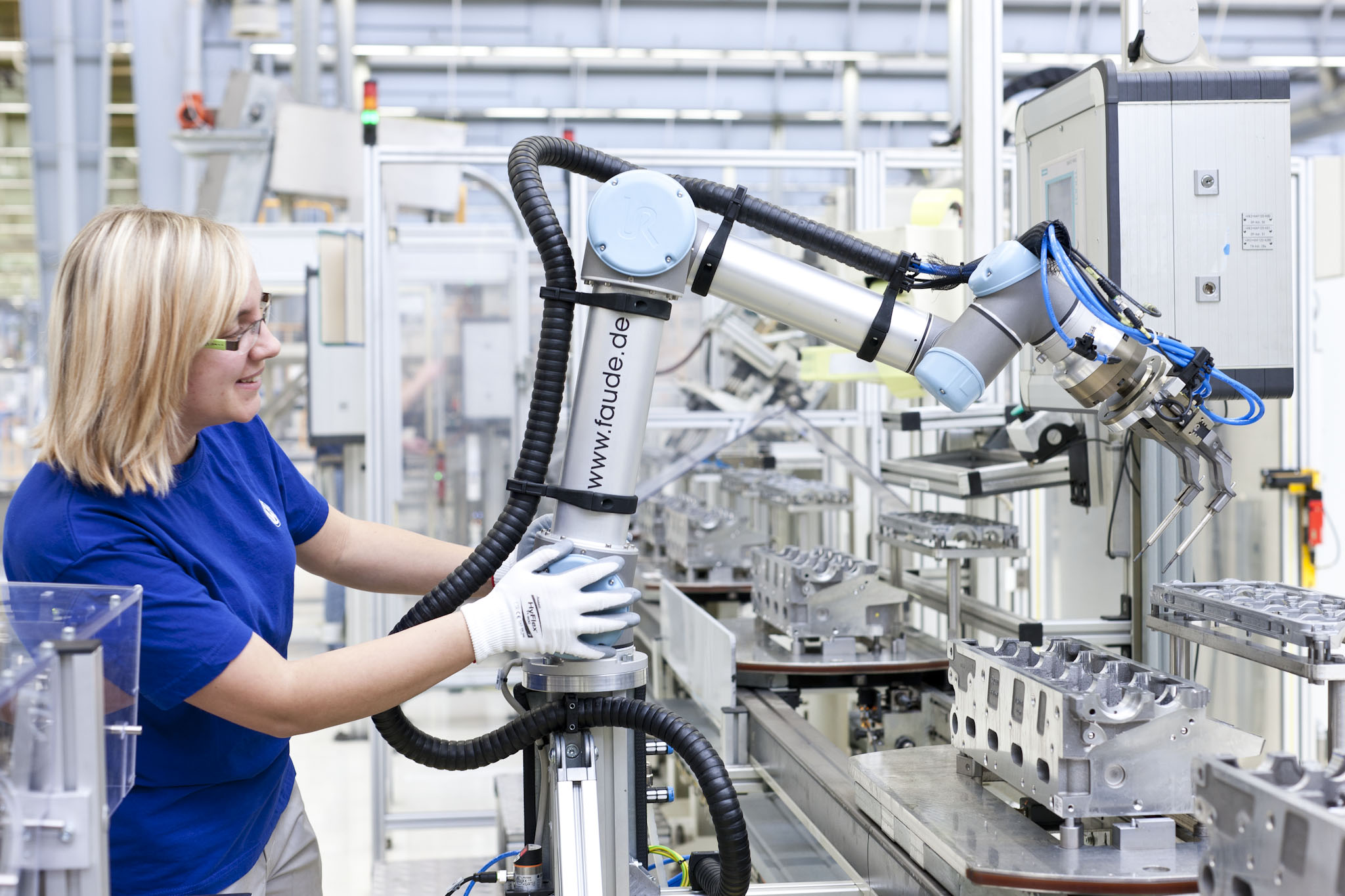Collaborative Robot Clocks in for Volkswagen
Amid Volkswagen’s 2.8 million square meter chrome-filled engine production plant in Salzgitter, Germany, one piece of metallic equipment stands out: the automaker’s first collaborative robot. The industrial robotic arm from Denmark’s Universal Robots sports six axes, as well as an integrated safety mode that lets it work directly with factory workers without requiring protective guards.
 After spending two years in development with Universal Robots and their distributor partner Faude Automatisierungstechnik, the lightweight “UR5” is currently assigned to the plant’s cylinder head assembly section where it handles delicate glow plugs.
After spending two years in development with Universal Robots and their distributor partner Faude Automatisierungstechnik, the lightweight “UR5” is currently assigned to the plant’s cylinder head assembly section where it handles delicate glow plugs.
With some 6,000 employees turning out 7,000 gas in diesel engines with over 370 variations per day, the plant holds its own as one of the largest engine production plants in the world. Before the UR5 was installed, two employees on the factory floor had to stoop down to manually insert glow plugs into minimally visible cylinder head holes. With back problems constituting a vast portion of disability claims, it’s pretty clear the value that such a robot could offer.
“We would like to prevent long-term burdens on our employees in all areas of our company with an ergonomic workplace layout,” explains Jürgen Häfner, project manager at Volkswagen’s Salzgitter plant. “By using robots without guards, they can work together hand in hand with the robot. In this way, the robot becomes a production assistant in manufacture and as such can release staff from ergonomically unfavorable work.”
Now, the UR5 takes over the stooping, as well as delicate handling and precise placement of the glow plugs. Not to be displaced by a robot, employees remain hard at work affixing the glow plugs and insulating the cylinder head.
Typical robotic arms can only enter the factory floor after additional protective housing has been installed to safeguard the wellbeing of the robots’ human counterparts. But in the case of the UR5 a specially designed collaborative gripper was developed to meet strict safety requirements and standard, ISO/TS 15066, which is specific to collaborative robots.
According to Tanya Anandan of the Robotic Industries Association, this sort of collaboration in manufacturing is here to stay. “Now you have a paradigm shift in how we view ‘the machines,’ their significance in the manufacturing space, and even their payback analysis,” says Anandan. “Humans and robots are working alongside each other and with each other, as coworkers.”
Not only that, but the blurring of lines continues as automation technologies shift away from performing discrete roles and instead are much more flexible in the types of operations that they can carry out.
“For all of these years, when we would put a robot into a plant, those at the executive or management level would say, ‘There’s a machine and that machine does that,’” says Erik Nieves, Technology Director for Yaskawa Motoman Robotics in Miamisburg, Ohio. “Now, it’s not about a particular task or process anymore. It’s a function of the fact that it is anthropomorphic and we have a natural connection to it.”
Collaborative industrial robots such as the UR5 can range from single-arm to dual-arm, 6-axis to 7-axis, all-purpose to high-speed industrial use, and can cost anywhere from $22,000 to six figures.
Universal Robots’ UR was introduced a year ago at the International Manufacturing Technology Show in Chicago as a part of a distribution push to North America. The base model sells for $34,000, with arm options that handle either a 5-kg or 10-kg payload.
“Applications that are very repetitive, mundane tasks that require an operator to stand at a machine all day or sometimes all night long, loading/unloading and initiating processes. That’s the exact type of application suited for our product,” says Edward Mullen, of Universal Robotics USA.
The company has sold a reported 2,000 robots since 2009.










